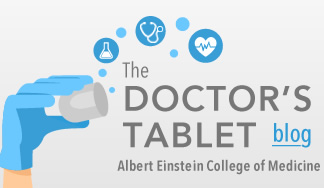Ebola Treatment
Einstein Responds to the Urgent Need for Effective Ebola Treatments
The current ebolavirus outbreak in central Africa’s Democratic Republic of the Congo (DRC) ranks as the second largest and second deadliest in history: more than 600 cases and more than 370 deaths as of January 6, according to the World Health Organization (WHO). Adding to the tragedy: children—who are much more likely to die from Ebola infection than adults—now account for more than one third of all cases.

Kartik Chandran, Ph.D.This is the 10th DRC outbreak since 1976, when the virus was first reported near the Ebola River, and the second this year. The deadliest on record was the 2013-2016 western Africa outbreak that killed more than 11,000 people. Kartik Chandran, Ph.D., professor of microbiology & immunology and the Harold and Muriel Block Faculty Scholar in Virology, is part of an interdisciplinary team of scientists from academia, government, and industry who have developed a promising new treatment for ebolavirus infection, described in two new studies published today in Cell Host & Microbe. We sat down with Dr. Chandran to talk about this work.
Q: What makes the ongoing DRC outbreak different than previous instances of Ebola infections in the population?
A: The ongoing DRC outbreak is unique in multiple respects. First, it is occurring in the context of an armed conflict that is disrupting containment. Also, for the first time, an experimental vaccine is being administered on a large scale to prevent new cases. Since early August, more than 40,000 people have received the rVSV-ZEBOV Ebola vaccine. It uses a genetically engineered animal virus to carry a gene expressing an Ebola virus glycoprotein that provokes an immune response. But despite these efforts, new cases continue, so we will certainly learn a lot about its efficacy in real-world conditions and be better prepared next time.
Q: What about treatment for people who are already infected?
A: That’s a critical need that I’ve focused on in my research. It’s important to note that so far, all anti-Ebola drugs are experimental. But our new studies describe what we believe will be a promising treatment. It uses two monoclonal antibodies (mAbs) that our team discovered in a human survivor of ebolavirus infection and then improved. These mAbs target and neutralize two distinct sites that all ebolaviruses need for infecting cells and then multiplying inside them.
Q: What makes your mAb treatment potentially superior to other antibody therapies developed for treating ebolavirus infections?
A: Most antibody therapies target just one specific ebolavirus. For example, the most advanced therapy—ZMapp™, a cocktail of three monoclonal antibodies—is specific for Ebola virus (formerly known as “Ebola Zaire”), which is causing the current DRC outbreak. But ZMapp and the other antibody therapies being tested in the DRC don’t work against two related ebolaviruses (Sudan virus and Bundibugyo virus) that have also caused major outbreaks.
In fact, while several drugs for treating Ebola virus are in clinical development, no therapies against Sudan virus or Bundibugyo virus have progressed beyond proof-of-concept studies. That’s why we developed our two-monoclonal-antibody cocktail—to fill the need for a “pan ebolavirus” drug that would help people infected in any Ebola outbreak regardless of the virus causing it. It’s the first treatment that could offer broad protection against all three major disease-causing ebolaviruses. We believe our cocktail will also work against other ebolaviruses “out there” that may yet jump into human populations and cause disease. A possible example of this is Bombali virus, a previously unknown ebolavirus recently discovered in Sierra Leone bats (described by two of our team members in 2018 in Nature Microbiology) that can infect human cells.
Q: How did you select the mAbs for your cocktail?
A: Our team screened 349 mAbs that were isolated from a survivor of the 2013-2016 western Africa Ebola outbreak, which was caused by the strain now known as Ebola virus. As described in a 2016 paper in Science and a 2017 paper in Cell, we found two mAbs that seemed to fit the bill. Now we’ve gone a few steps farther. We had already concluded that one of those mAbs, known as ADI-15878, worked better than the other. But even though ADI-15878 fully protected mice challenged with Ebola virus and Sudan virus, it provided only partial protection for infected ferrets and guinea pigs. So we began searching for a mAb we could partner with ADI-15878 to create a broadly neutralizing mAb cocktail that could clear infections caused by all three major ebolaviruses: Ebola virus, Bundibugyo virus and Sudan virus.
Q: Could you describe the new Cell Host & Microbe papers’ key findings?
A: The first study, by a team that I led, describes our two-mAb cocktail and its effectiveness in neutralizing ebolaviruses. It combines ADI-15878—the mAb described above, which we isolated from the Ebola survivor—with the mAb ADI-23774, which was isolated from that same survivor but was further engineered to better recognize and neutralize Sudan virus.
We then improved the cocktail. By tweaking both mAbs, we enabled them to activate receptors on immune cells whose role is to kill infected cells. This second-generation mAb cocktail proved more effective than any previously developed anti-Ebola mAbs. In fact, we achieved a level of protection that had never been reached before. We gave a lethal dose of Sudan virus to guinea pigs. After five days, we treated them with a low dose of mAbs and the results were striking: Even with the delay in treatment, the low dose protected 70 to 100 percent of the guinea pigs.
In the second study, a team led by Zachary Bornholdt, Ph.D., director of antibody discovery at Mapp Biopharmaceutical, tested the second-generation version of the two-mAb cocktail in ferrets and nonhuman primates (macaques) each infected with one of the three disease-causing ebolaviruses. (Ferrets are ideal small-animal models for evaluating Ebola therapies because the resulting disease causes symptoms also observed in humans.) The cocktail was protective against all three pathogens in infected animals of both species—and for all three pathogens, just a single low dose inhibited viral infection and reversed disease in the macaques. We believe that the development of this cocktail could be a model for quickly engineering new drugs to combat emerging pathogens.
Q: Are people infected in the Congo Ebola outbreak receiving any of the experimental treatments developed so far?
A: Yes. Since the DRC outbreak began in August, more than 160 patients were treated with experimental drugs under a compassionate-use framework developed by WHO. Then, in late November, WHO announced the first-ever randomized controlled trial of anti-Ebola drugs, in which ZMapp and three other mAb based experimental drugs, specific to Ebola Zaire, are being evaluated for effectiveness and safety. It’s too early to say how well any of these treatments have performed.
It’s too early in the drug-development process for our cocktail to be used during the DRC outbreak. But the Biomedical Advanced Research and Development Authority, or BARDA—the part of the Department of Health and Human Services that develops medical countermeasures against public health emergencies—recently awarded Mapp Biopharmaceutical, our industrial partner, a contract to take our second-generation mAb cocktail through phase 1 clinical trials for Sudan virus. So it will be a few more years before our cocktail receives Food and Drug Administration approval.
Q: How would your mAb cocktail be administered to patients?
A: That points up another of the cocktail’s attributes. All other anti-Ebola mAb therapies must be given intravenously. By contrast, our mAb cocktail is so potent that it could probably be further optimized for administration by intramuscular injection—greatly simplifying treatment in Ebola treatment units and allowing more patients to be treated soon after they arrive.
Posted on: Wednesday, January 09, 2019
Other Top Stories
9/11 World Trade Center Exposure Linked to Heart Disease Among NYC Firefighters
On Becoming a Physician: New Einstein Students Receive White Coats and Stethoscopes
Novel Therapy for Acute Migraine Shows Promise in Phase 3 Clinical Trial
First Complete Wiring Diagram of an Animal's Nervous System
Multimillion Dollar NIH Grant to Help Reduce Opioid Use & Get Care to People Who Need It
NIH Grant Funds $23 Million Study of Diseases Affecting People Living with HIV
New TAILORx Data Guides Adjuvant Therapy in Younger Breast Cancer Patients
Einstein Celebrates Its 61st Commencement
Bolstering Biopsies: Testing Patients' Individual Cells to Guide Treatment



Tablet Blog